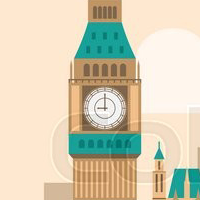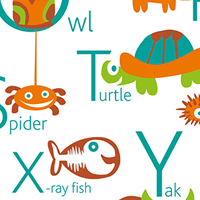Bộ đề thi thử THPT Quốc gia năm 2017 môn Tiếng Anh trường THPT Đoàn Thượng, Hải Dương CÓ ĐÁP ÁN (Lần 1)
Đề thi Đại học môn Tiếng Anh năm 2017 có đáp án
Kì thi THPT Quốc gia đang đến gần, các bạn đã chuẩn bị sẵn sàng cho kì thi này chưa? Hãy cùng làm quen với Bộ đề thi thử THPT Quốc gia năm 2017 môn Tiếng Anh trường THPT Đoàn Thượng, Hải Dương CÓ ĐÁP ÁN (Lần 1). Chúc các bạn ôn tập tốt!
Đề thi thử THPT Quốc gia năm 2017 môn Tiếng Anh trường THPT Phương Xá, Phú Thọ có đáp án
Đề thi thử THPT Quốc gia năm 2017 môn Tiếng Anh trường THPT Lý Thường Kiệt, Yên Bái CÓ ĐÁP ÁN (1)
Đề thi thử THPT Quốc gia năm 2017 môn Tiếng Anh trường THPT Lý Thường Kiệt, Yên Bái CÓ ĐÁP ÁN (2)
Mark the letter A, B, C, or D on your answer sheet to indicate the sentence that best joins each of the following pairs of sentences in each of the following questions
1. He behaved in a very strange way. That surprised me a lot.
A. I was almost not surprised by his strange behaviour.
B. His behaviour was a very strange thing, that surprised me most.
C. What almost surprised me was the strange way he behaved.
D. He behaved very strangely, which surprised me very much.
2. I think my hair looks fine. My mother believes it needs a little more brushing.
A. I think my hair looks so fine that my mother believes it needs a little more brushing.
B. I think my hair looks fine, but my mother believes it needs a little more brushing.
C. Not only do I think my hair looks fine, but my mother also believes it needs a little more brushing.
D. Either my mother believes it needs a little more brushing or I think my hair looks fine.
Mark the letter A, B, C, or D on your answer sheet to indicate the correct answer to each of the questions.
3. The bank is reported in the local newspaper___________in board daylight yesterday
A. to have been robbed B. to be robbed C. having been robed D. robbed
4. To plant rice, farmers,___________, set young plants in the mud.
A. they wade with bare feet in the water B. water wadding in their feet
C. whose bare feet wadding in the water D. wadding in the water with their bare feet
5. As a family rule, my parents do not allow___________telephone calls late at night.
A. to make B. making C. being made D. make
6. The captain as well as all the passengers___________very frightened by the strange noise.
A. were B. have been C. are D. was
7. The___________north we go, the more likely we are to meet highlands.
A. farthest B. further C. more far D. farer
8. When the U.S and England proclaimed war against Iraq, the anti-war protesters all around the world___________practically all the roads to the famous squares.
A. took over B. blocked off C. turned over D. set up
9. Next week, when there___________a full moon, the ocean tide will be higher.
A. is being B. will have been C. is D. will be
10. Had Darren not wasted his Christmas bonus gambling in Las Vegas, he___________to Mexico with us next month.
A. will be going B. will go C. would go D. would have gone
11. The professor asked his secretary by whom___________changed.
A. was the timetable B. the timetable is C. the timetable has been D. the time table had been
12. Many youngsters in Hanoi are crazy about "funky balls" despite experts' warnings of their ___________impacts.
A. adverse B. adversity C. adversary D. adversely
13. We were going by bus but in the end we___________because Simon gave us a lift.
A. didn't need to B. needn't have C. need not to D. needn't
14. We humans all must take___________for the activities that are damaging our Mother Earth.
A. possibility B. responsibility C. ability D. probability
Mark the letter A, B, C, or D on your answer sheet to indicate the word that differs from the rest in the position of the main stress in each of the following questions
17. A. maintain B. response C. mariage D. believe
18. A. simplicity B. discovery C. equality D. difficulty
Mark the letter A, B, C, or D on your answer sheet to indicate the most suitable response to complete each of the following exchanges.
19. Two friends Diana and Anne are talking with each other about their exam results.
-Diana: Look at this, Anne! I got the highest score of the class in Maths.
-Anne:___________.
A. I worried about that. B. Congratulations!
C. Thank you for your advice. D. I'd love to but I can't.
20. Nancy, Tom and Bella are in the dining room.
-Nancy: Let's have supper now.
-Tom:___________.
A. But Bill isn't here. B. No, I don't think so. C. There aren't any. D. You aren't eating.
Read the following passage and mark the letter A, B, C, or D on your answer sheet to indicate the correct answer to each of the questions.
There are a number of natural disasters that can strike across the globe. Two that are frequently linked to one another are earthquakes and tsunamis. Both of them can cause a great amount of devastation when they hit. However, tsunamis are the direct result of earthquakes and cannot happen without them.
The Earth has three main parts. They are the crust, the mantle, and the core. The crust is the outer layer of the Earth. It is not a single piece of land. Instead, it is comprised of a number of plates. There are a few enormous plates and many smaller ones. These plates essentially rest upon the mantle, which is fluid. As a result, the plates are in constant - yet slow - motion. The plates may move away from or towards other plates. In some cases, they collide violently with the plates adjoining them. The movement of the plates causes tension in the rock. Over a long time, this tension may build up. When it is released, an earthquake happens.
Tens of thousands of earthquakes happen every year. The vast majority are so small that only scientific instruments can perceive them. Others are powerful enough that people can feel them, yet they cause little harm or damage. More powerful earthquakes, however, can cause buildings, bridges, and other structures to collapse. They may additionally injure and skill thousands of people and might even cause the land to change it appearance.
Since most of the Earth's surface is water, numerous earthquakes happen beneath the planet's oceans. Underwater earthquakes cause the seafloor to move. This results in the displacement of water in the ocean. When this occurs, a tsunami may form. This is a wave that forms on the surface and moves in all directions from the place where the earthquake happened. A tsunami moves extremely quickly and can travel thousnads of kilometres. As it approaches land, the water near the coast gets sucked out to sea. This causes the tsunamis to increase in height. Minutes later, the tsunami arrives. A large tsunami - one more than ten meters in height - can travel far inland. As it does that, it can flood the land, destroy human settlements, and kill large numbers of people.
21. The word "It" in bold in paragraph 2 refers to___________.
A. The mantle B. The crust C. The Earth D. The core
22. The word "adjoining" in bold in paragraph 2 is closest in meaning to___________.
A. bordering B. residing C. appearing D. approaching
23. The word "perceive" in bold in paragraph 3 is closest in meaning to___________.
A. locate B. comprehend C. detect D. prevent
24. Which of the following is true regarding the crust?
A. It is thicker on land than it is under the water.
B. The mantle beneath it keeps it from moving too much.
C. It is the smallest of the Earth's three layers.
D. There many separate pieces that make it up.
25. Which of the following is NOT mentioned in paragraph 3 about earthquakes?
A. How many people they typically kill B. How often powerful ones take place
C. What kind of damage they can cause D. How severe the majority of them are
26. Based on the passage, what is probably true about tsunamis?
A. They kill more people each year than earthquakes.
B. They are able to move as fast as the speed of sound.
C. They can be deadly to people standing near shore.
D. They cannot damage ships sailing on the ocean.
27. What is the passage mainly about?
A. How earthquakes and tsunamis occur. B. What kind of damage natural disasters can cause.
C. Why tsunamis are deadlier than earthquakes. D. When earthquakes are the most likely to happen.
28. Which of the following statements does paragraph 1 support?
A. A tsunami happens in tandem with an earthquake.
B. Earthquakes cause more destruction than tsunamis.
C. The most severe type of natural disaster is an earthquake.
D. Earthquakes frequently take place after tsunamis do.
Mark the letter A, B, C, or D on your answer sheet to indicate the sentence that is closest in meaning to each of the following questions.
32. When the unemployment rate is high, the crime rate is usually also high.
A. The high rate of unemployment depends on the high rate of crime.
B. The higher the unemployment rate is, the higher the crime rate is.
C. The unemployment rate is as high as the crime rate.
D. The unemployment rate and the crime rate are both higher.
33. "If you touch my iPad again, I'll tell mother," said my elder brother.
A. My elder brother said that he would tell mother if I touched his iPad again.
B. My elder brother threatened to tell mother if I touched his iPad again.
C. My elder brother advised me to tell mother if I touched his iPad again.
D. My elder brother tried to convince me that touching his iPad again is unallowed.
34. As soon as he arrived at the airport, he called home.
A. No sooner had he arrived at the airport than he called home.
B. He arrived at the airport sooner than he had expected.
C. Calling home, he said that he had arrived at the airport.
D. He arrived at the airport and called me to take him home.
D. Being sent easily and quickly
Read the following passage and mark the letter A, B, C, or D on your answer sheet to indicate the correct answer to each of the questions.
According to airline industry statistics, almost 90 percent of airline accidents are survivable or partially survivable. But passengers can increase their chances of survival by learning and following certain tips. Experts say that you should read and listen to safety instructions before take-off and ask questions if you have uncertainties. You should fasten your seat belt low on your hips and as tightly as possible. Of course, you should also know how the release mechanism of your belt operates. During take-off and landings you are advised to keep your feet flat on the floor.
Before take-off you should locate the nearest exit and an alternative exit and count the rows of seat between you and the exits so that you can find them in the dark if necessary. In the event that you are forewarned of the possible accident, you should put your hands on your ankles and keep your head down until the plane come to complete stop.
If smoke is present in the cabin, you should keep your head low and cover your face with napkins, towels, or clothing. If possible, wet these for added protection against smoke inhalation. To evacuate as quickly as possible, follow crew command and do not take personal belongings with you. Do not jump on escape slides before they are fully inflated and when you jump, do so with your arms and legs extended in front of you.
When you get to the ground, you should move away from the plane as quickly as possible, and never smoke near the wreckage.










